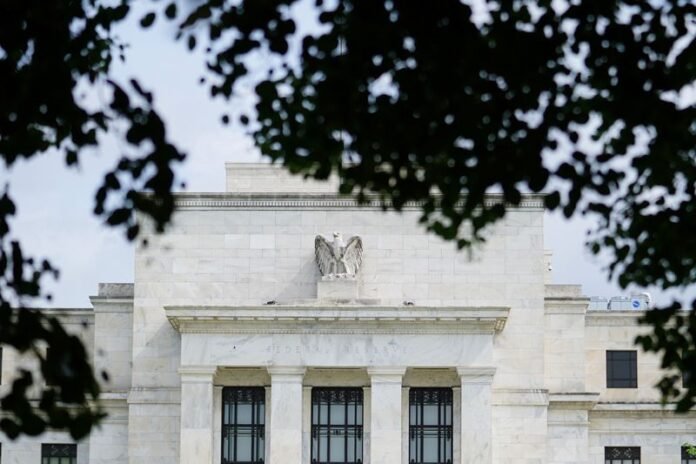By Howard Schneider
WASHINGTON (Reuters) -The Federal Reserve is expected to reduce its benchmark policy rate by a quarter of a percentage point at the end of its policy meeting on Thursday, a decision that may seem a footnote given the uncertain economic terrain the U.S. central bank may soon be navigating under a second Trump administration.
Former President Donald Trump’s victory in Tuesday’s presidential election and the prospect that his fellow Republicans will control both houses of Congress in January puts in play policy changes from import tariffs to tax cuts to stifled immigration that could rewrite the outlook for economic growth and inflation that Fed policymakers had expected to face next year.
It may take months for the proposals to evolve and work through Congress even under full Republican control.
For now, new economic data continue to work in the Fed’s favor. Data released on Thursday showed that initial unemployment claims remained low in the latest week and worker productivity jumped by a healthy 2.2% in the third quarter, helping offset a 4.2% rise in workers’ hourly compensation.
Fed officials have cited improved productivity as one of the factors that has improved their confidence in a continued decline in inflation.
“This is the kind of result the Fed likes to see as it contemplates cutting rates,” wrote Carl Weinberg, chief economist for High Frequency Economics.
But with bond yields continuing their recent rise in the wake of Tuesday’s election results, investors now expect the Fed will end up cutting interest rates less than previously anticipated as it takes stock of a new economic regime that may mean bigger federal deficits, stronger growth, and higher inflation in the short run, and also come with longer-term risks.
“You can see over time, the direction of budget deficits, tariffs … can become a problem” for the Fed to manage, said Steven Blitz, chief U.S. economist at TS Lombard.
After having free rein to raise interest rates to fight inflation in a strong economy, the central bank may end up “in second position” keeping up with shifts in trade and global capital flows triggered by administration policies, facing both rising prices and pressure to keep unemployment low, Blitz said.
Trump during his 2017-2021 presidency was open in calling for low interest rates, eventually branding Fed Chair Jerome Powell as an “enemy” because of rate hikes he thought were unnecessarily stifling growth, a turbulent background to a relationship that will be closely watched in coming months.


